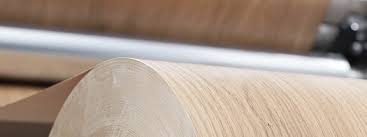- Home
- wholesale duplex paper manufacturing process
Nov . 11, 2024 10:55 Back to list
wholesale duplex paper manufacturing process
The Wholesale Duplex Paper Manufacturing Process
Duplex paper, known for its superior quality and versatility, is a popular choice in various industries, particularly for packaging and printing applications. It is characterized by its two-layer structure, with a smooth coating on one or both sides, providing excellent printability and a high-quality finish. Understanding the wholesale duplex paper manufacturing process is essential for businesses looking to produce or source this product efficiently.
Raw Materials
The manufacturing process begins with the selection of raw materials. The primary components of duplex paper are wood pulp, recycled paper, and additives that enhance the sheet's properties. The wood pulp can be sourced from both hardwood and softwood trees, with recycled fibers being an eco-friendly option that helps reduce environmental impact. Additives may include fillers like calcium carbonate for brightness, starch for strength, and optical brighteners to enhance whiteness.
Pulping Process
The first step in the production of duplex paper is the pulping process. This involves processing wood chips or recycled paper through mechanical or chemical means to separate the fibers. In chemical pulping, a cooking liquor consisting of sodium hydroxide and sodium sulfide is used to dissolve the lignin that binds the cellulose fibers together. This results in clean, usable pulp. For mechanical pulping, the wood is ground to separate the fibers while retaining much of the lignin. The choice of pulping method impacts the final product's quality and cost.
Bleaching and Refining
Once the pulp is obtained, the next phase is bleaching, which is crucial for achieving the desired brightness and whiteness of the duplex paper. Various bleaching agents, such as chlorine dioxide, hydrogen peroxide, or ozone, can be used depending on the pulp type and the required brightness level. After bleaching, the pulp undergoes a refining process, where it is beaten and mixed to improve fiber bonding, enhancing the strength and quality of the final paper sheet.
Sheet Formation
wholesale duplex paper manufacturing process

Sheet formation is a pivotal step in the duplex paper manufacturing process. The refined pulp is diluted with water to create a slurry, which is then spread onto a moving mesh conveyor belt in a paper machine. Water is drained from the slurry, and the fibers begin to bond together. This step traditionally uses a Fourdrinier machine, where the sheet is formed continuously. The thickness and texture of the duplex paper are determined by the amount of pulp used and the properties of the mesh screen.
Pressing and Drying
After the initial sheet formation, the wet paper passes through several press rolls that remove excess water, improving its density and reducing the final moisture content. Following this, the sheet enters the drying section, where it passes over heated cylinders, allowing it to dry completely. The drying process is crucial to ensure the duplex paper achieves its intended strength and quality.
Coating and Finishing
To enhance the duplex paper's surface characteristics, a coating process may be applied. This usually consists of a mixture of pigments and binders that provide a smooth surface, enhancing print quality and visual appeal. After coating, the paper undergoes calendering, where it is passed through a series of rollers to further improve smoothness and glossiness.
Slitting and Packaging
The final phase of the manufacturing process involves slitting the large rolls of duplex paper into smaller rolls or sheets, depending on customer requirements. The finished products are then carefully packaged to prevent damage during transportation and ensure they reach wholesalers in pristine condition.
Conclusion
The wholesale duplex paper manufacturing process is a complex combination of various stages, each critical to producing high-quality, versatile paper. By understanding this process, businesses can better appreciate the value of duplex paper and its applications across different sectors, from packaging to high-end printing. As sustainability becomes a key concern, many manufacturers are also exploring more eco-friendly methods, making duplex paper an increasingly attractive option in today's market.
Latest news
-
High-Quality Bathroom Cabinet Contact Paper – Durable & Stylish Leading Suppliers, Exporters, Manufacturers
NewsJul.08,2025
-
Premium Wood Contact Paper for Desk – Reliable Suppliers & Exporters
NewsJul.08,2025
-
Premium Contact Paper for Table Top – Durable & Stylish Surface Solution from Leading Manufacturer
NewsJul.07,2025
-
Duplex Board with Grey Back - Reliable Supplier & Competitive Price Manufacturer & Exporter
NewsJul.07,2025
-
Premium White Contact Paper on Cabinets – Trusted Exporters & Suppliers
NewsJul.06,2025
-
High-Quality Duplex Board Packaging for Food Reliable Manufacturer & Supplier
NewsJul.06,2025

